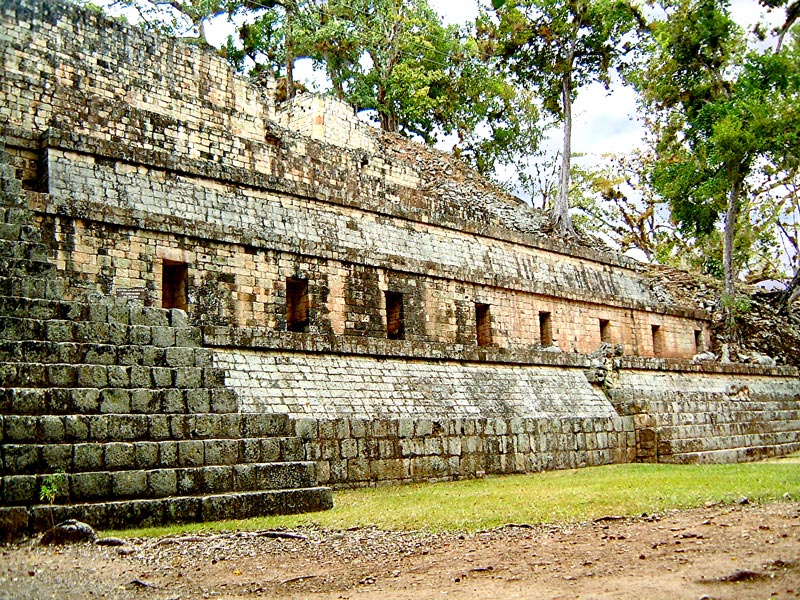
W1072: Temple of Inscriptions (South) Structure 10L-11 was completed by Copan’s mysterious 16th Ruler, Yax Pax Chan Yopaat, in around 769AD. In it’s heyday, Temple 11 was adorned the largest frieze ever attempted by the Maya, which included the massive head of The Old Man of Copan holding aloft a sky arch featuring the Cosmic Monster. 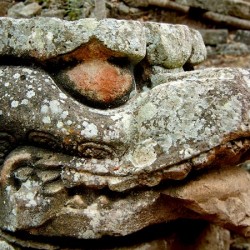
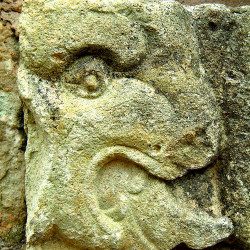
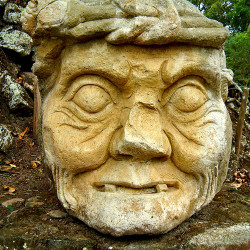
Some of the ornaments that adorned Temple 11 Unfortunately, following the death of Yax Pasaj Chan Yopaat, Copan fell into rapid decline and many of the ornaments were removed and sent tumbling down the massive stairway on the north-side and the Temple was robbed and burned – along with many of Yax Pasaj’s other buildings, such as Structure 10L-18. Yax Pasaj was a particularly mysterious ruler because he doesn’t appear to be part of the divine blood-line and his mother is thought to have been a noble-woman from Palenque. Yax Pasaj ruled through a particularly bleak period due to a lack of finances caused by Quirigua’s strike for independence in 738AD. It also seems probable that there was a prolonged drought which affected the entire Mayan territories during the latter half of the 8th century, as many of the big cities lost control around this time. The population at Copan had swelled to 20,000 people and starvation started to set in as they could no longer afford to sustain such a large centre without the revenue from the Motagua River, which Quirigua had taken. Yax Pasaj was therefore desperate to make money and supply food to prevent a civil war and his appointment may even have been an attempt to secure finances from Palenque.
Temple 11 is covered in glyphic inscriptions that describe the sacred rites that were performed within it and allude to its religious function, hence it is also known as the Temple of Inscriptions. Unfortunately, these texts are so specific to these unknown rites that they remain unreadable at present. However, the few carvings that remain attached and in situ around the building do provide enough evidence to assess its function and symbolic purpose. The most descriptive carvings are those of the so called “Howler Monkey God”.
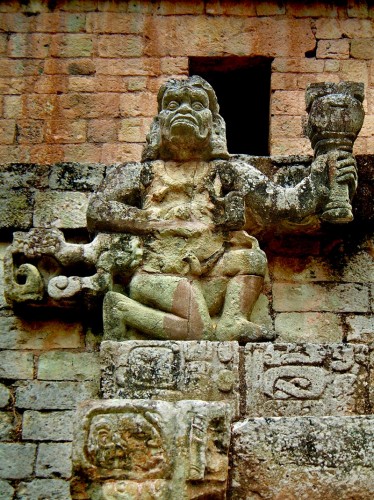
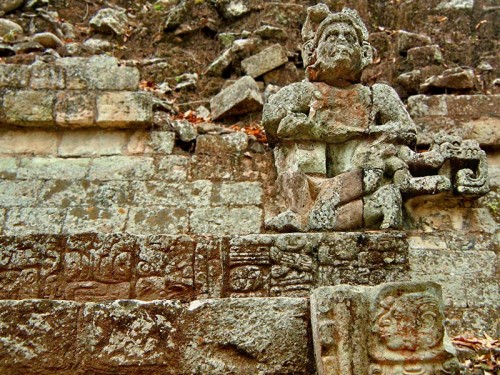 The two “Howler Monkey Gods” flanking the stairs to Temple 11
The two “Howler Monkey Gods” flanking the stairs to Temple 11
The two Howler Monkey Gods flank the stairway that rise from the West Court and have been given their name from the ape like face that they feature and what appear to be curling tails. The Howler Monkey Gods are thought to be associated with music and dance, as well as literature, and the left-hand monkey strikes a theatrical pose with what is said to be a rattle in his hand. However, this object looks very much like a torch with flames licking out of the top, just like those held by the 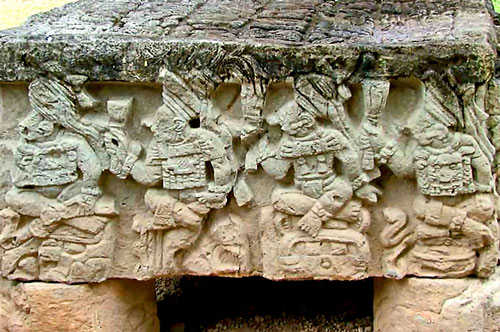
W1064Q2: Altar Q – 2nd Sideprecession of Rulers on Altar Q (fig W1064Q2), suggesting that these may not be a thespian monkeys after all. Also, there are two tails flowing from their posteriors – one of which is clearly a serpent with its tongue flopping out. The two Gods also feature the serpents seeping from the sides of their mouths which is generally associated with Chac, the God of Thunder and Lightning. The Maya had another storm God, known as Hurican, who was the God of Wind, Storm and Fire (and, yes, we use his name today to describe hurricanes). He is also known as God K and is often referenced on the sceptres of kingship shown in the stelae of the Maya (see fig. W0969C: in The Stelae of Quirigua article). It is, therefore far more likely that these two guardians of the eastern stairway of Temple 11 are Hurican.
Hurican was present during all three attempts at creating man, the third of which was successful and occurred in 3114AD. Hurican sat on the misty winds of the primordial ocean and called the earth to rise from the sea, which it did in the form of a turtle shell. The front of Temple 11 is clearly split where the two “Monkey” Gods are resting, with the sloping walls and stairs featuring shells and emblems of the sea leading down to the West Court below them, the band of wall above the stairs behind them representing the earth, and then the portals or doorways of the heavens on the upper level (see fig. W1072). The building was then adorned with the Pauahtun holding the sky band, featuring the double-headed serpent known as he Cosmic Monster, the remnants of which can still be found lying around the West Court today. Temple 11 is therefore representative of the primordial cosmos and probably designed to tell us how the sceptre of kingship was given by Hurican to the ruler of Copan as he ascended from the waters, thus linking the divine lineage of Copan to the creation event at the beginning of time.
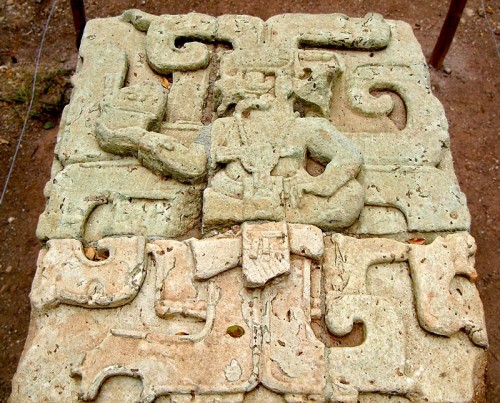
W1070: Xibalaban Ball-Court StoneBut, Yax Pasaj wasn’t satisfied with that significant feat, and the stairs also lead down to the underworld, which is defined by three Xibalban ball-court markers which are still located outside the Temple (in fig. W1064 you can see the view of Templo 16 from Templo 11 and you can see two of the square markers on the ground on the left of shot). The markers clearly show the evil looking Lords of Xibalba nestled amongst the roots of the Tree of Life (fig. W1070). The stairs and sloping walls of Temple 11 act as one of the sloping walls of the ball-game arena, from the top of which the game can be watched. The sacred ball-game has its origins in a mythical game played by the Hero Twins, Hunuhpu and Xbalanque, who were asked to play against the the Lords of Xibalba. The myth ends with the boys winning the game and defeating the Lords of Xibabla and therefore defeating death. The ball-court outside Temple 11 certainly intended to define the floor or the West Court as the underworld, but it may have also been placed there to suggest that Pax Yasaj would also beat death – a strong message in such troubled times.
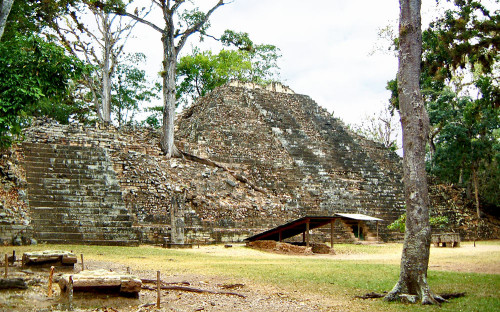 then
then
W1064: Templo 16 as seen from Templo 11The ball-court unlocks the metaphorical purpose of the entire West Court, because the stairs down from Temple 11 suddenly become steps leading to the underworld. Yax Pasaj could then descend the steps to meet the ancestors. On the eastern flank of the West Court lies Temple 16 in which Copan’s first ruler, Yax K’uk’ Mo’, is buried deep within. The east acts as a place of rebirth as it is where the sun is reborn every day. Conversely, the west is the direction of death as it is where the sun descends into the underworld each night. Copan’s long deceased first divine ruler could descend down the western stairs of Temple 16 into the underworld where Yax Pasaj could meet him. Here, at the foot of the steps of Temple 16, Yax K’uk’ Mo’ could pass on the sceptre of kingship to Yax Pasaj, making Yax Pasaj the new divine ruler. 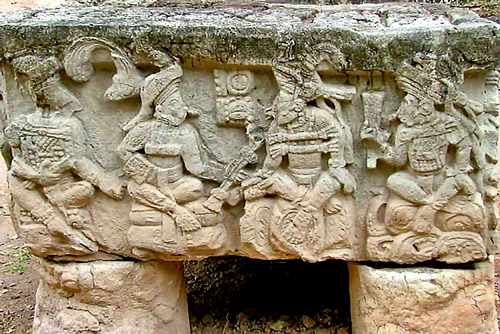
W1064Q1: Altar Q – 1st SideThis event is marked by Altar Q, which sits at the foot of the western stairs of Temple 16 and pictures Yax K’uk’ Mo’ passing the sceptre on to Yax Pasaj (fig. W1064Q1). Yax Pasaj could then journey back through the underworld to the stairs of Temple 11 and return to the middle world as the divine ruler of Copan. It is very likely that this wasn’t allegorical and was acted out in a magical stage show designed to show the citizens of Copan the handing over of power from their divine founder to its hopeful new ruler, Yax Pasaj Chan Yopaat.
In summary, there is plenty of evidence to suggest that Temple 11 was designed as a portal for Yax Pasaj to travel between the realms of the heavens and the underworld – a power that any divine ruler should have in his possession. Unlike his predecessors, Yax Pasaj may have felt the need prove his divinity as he wasn’t part of the divine royal lineage. So his programme of building around the West Court was designed to provide him with the powers he was not born with and instil the confidence in the people, and particularly the feudal Council, that he was a Divine Ruler in possession of the godly powers required to run the city.
References:
1 http://mayaruins.com/copan/a1_1157.html
2 https://sarweb.org/media/files/sar_press_copan.pdf

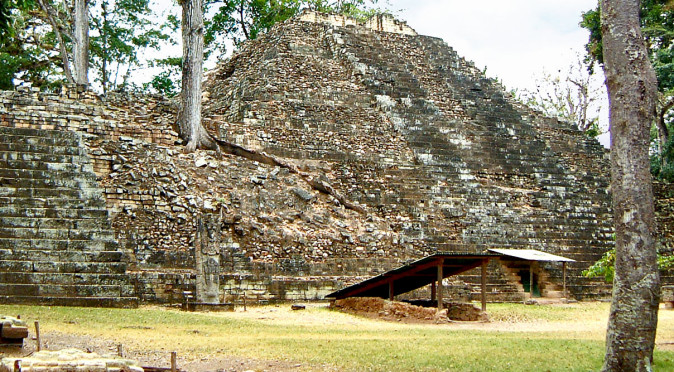
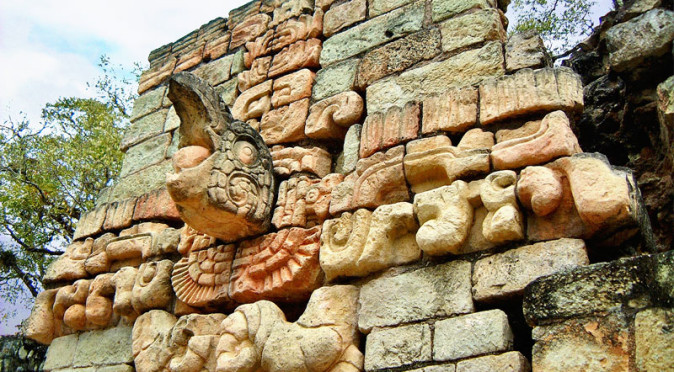
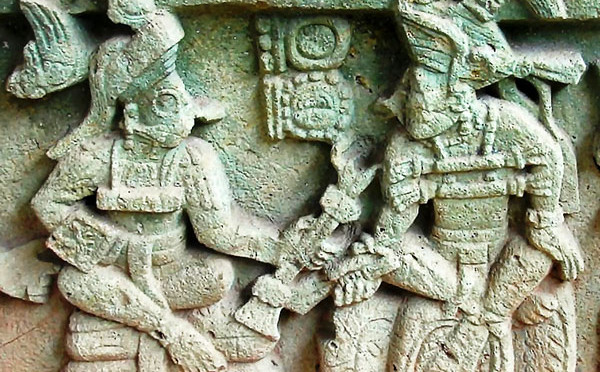
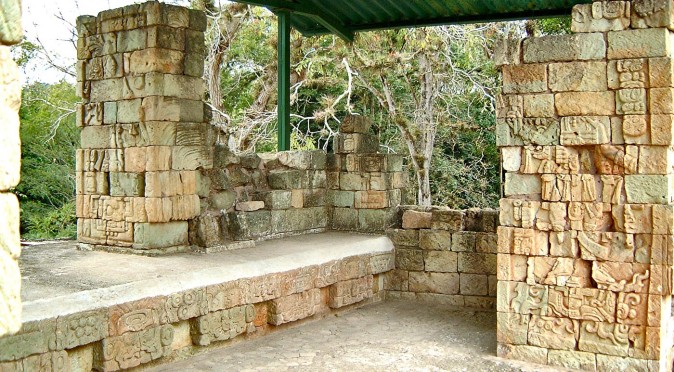
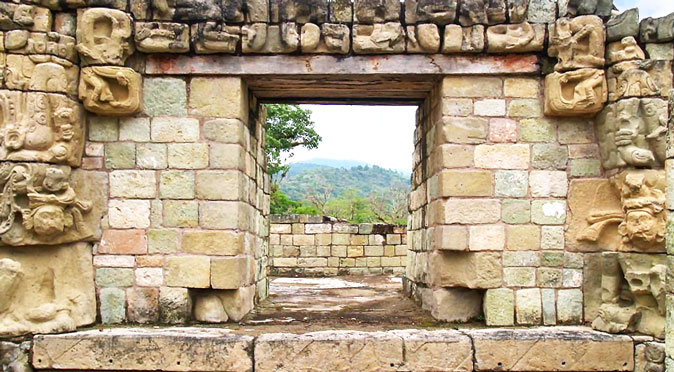
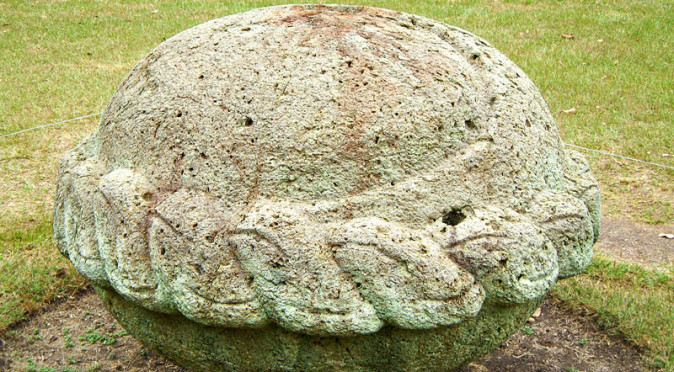
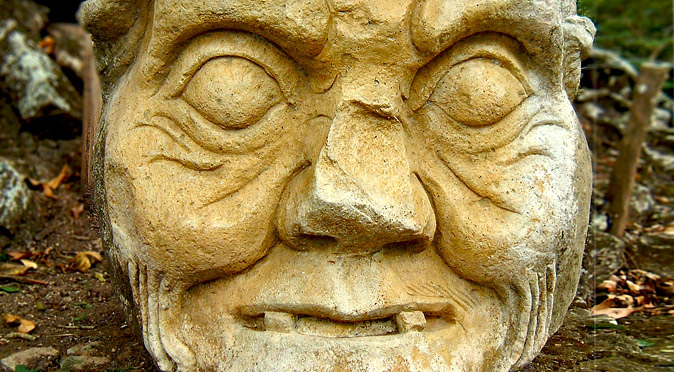
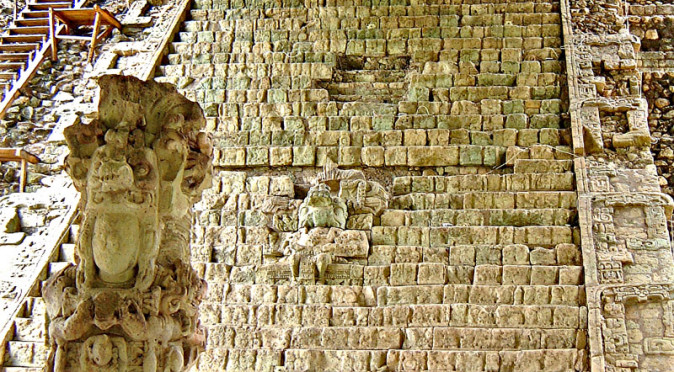
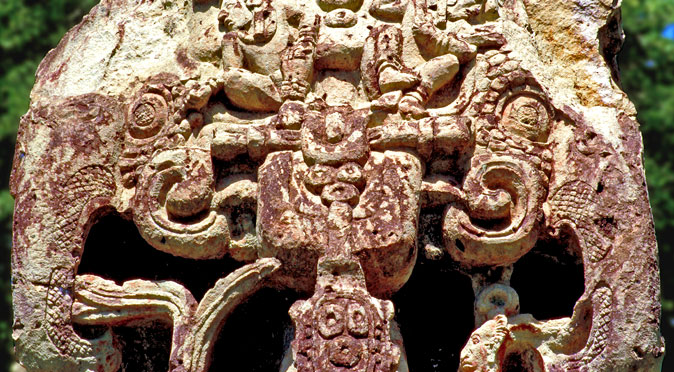
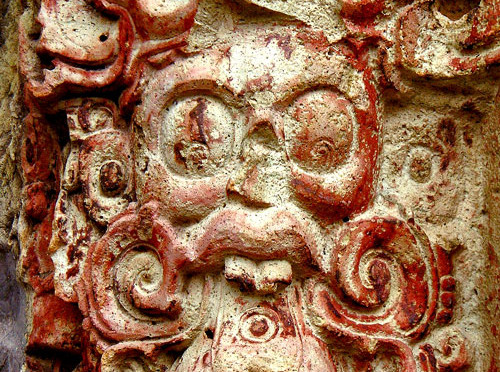
re: The markers clearly show the evil looking Lords of Xibalba nestled amongst the roots of the Tree of Life (fig. W1070).
Where did you get your information?
I am trying to identify the god we see perched in the ‘roots’, however others have also identified this god as the Maize God, hard to find scholarly documentation.
Do you have any sources for these 3 markers?
cheers,
Hi Raphael, I will check back and see if I can find more sources. Many of my notes come from the information signs found at the sites I visited plus conversations with other researchers and guides. Ultimately, these markers are well worn, but the expression and attire of this character are not those typically associated with the Maize God. The “roots” of the tree combine vegetative symbolism with blood/fire scrolls, suggesting regeneration through death. I will see if I can find out a bit more for you though… Thanks, Robin